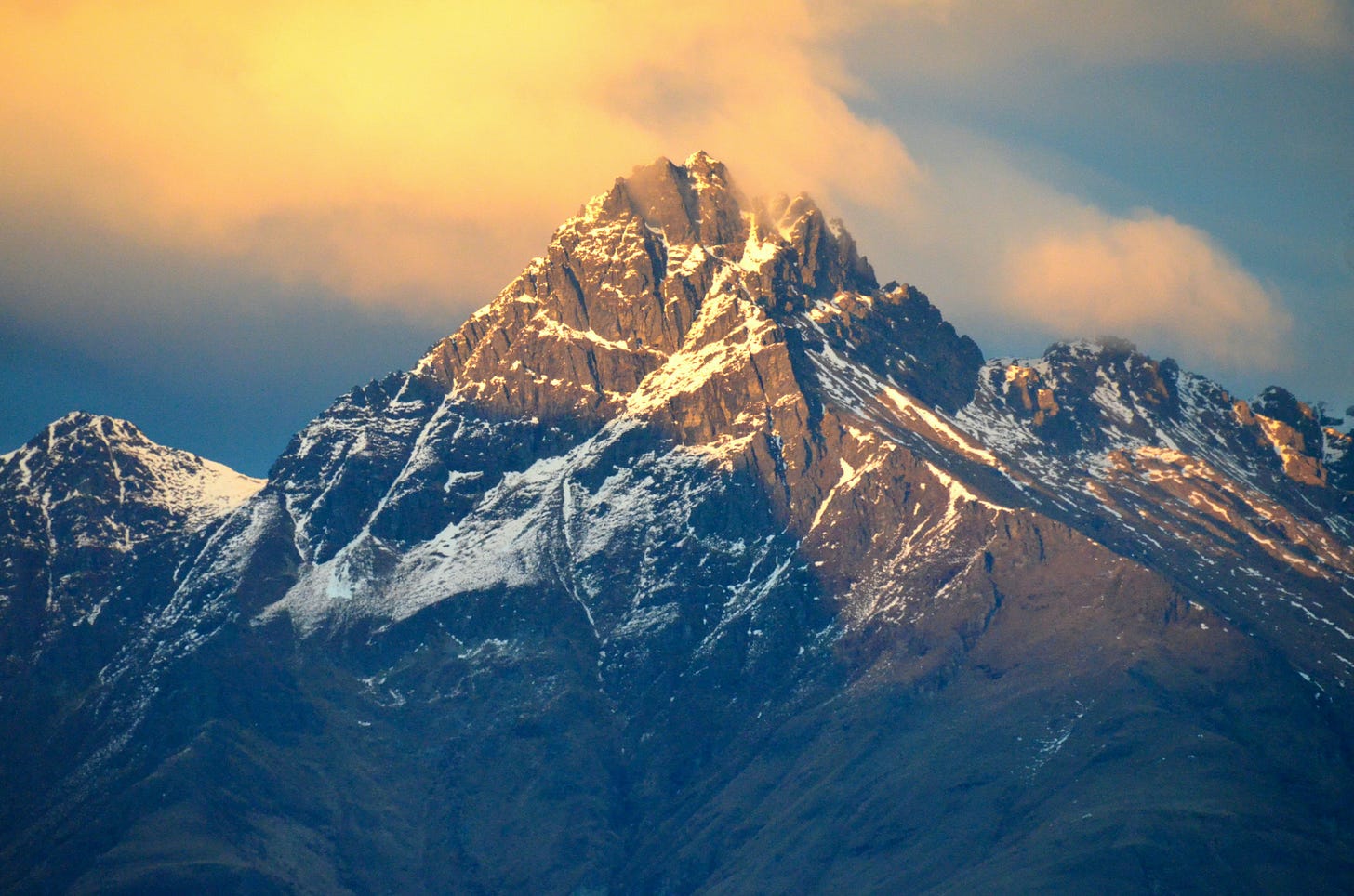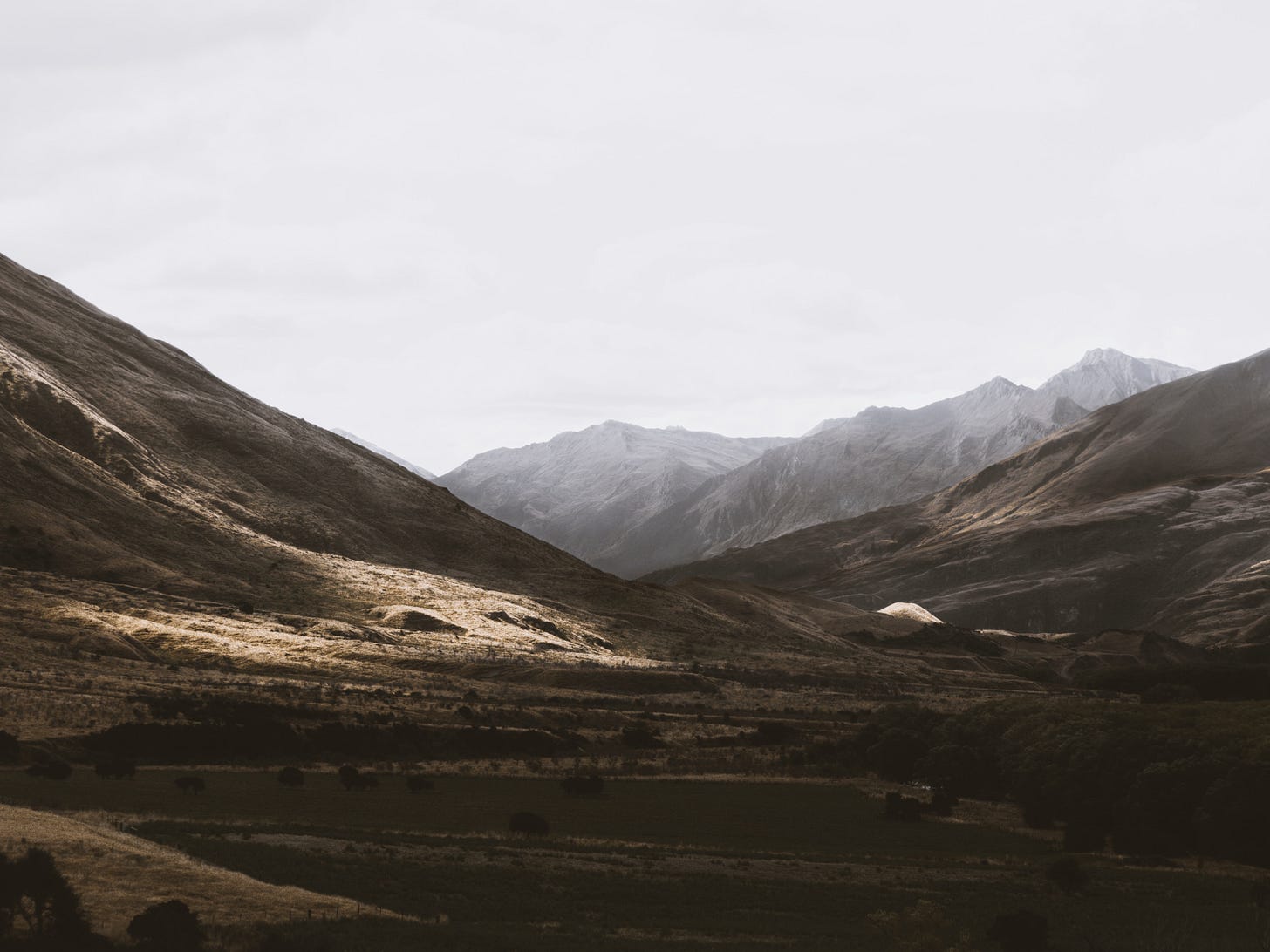I have called this talk “Peaks and Vales,” and I have been aiming to draw apart these images in order to contrast them as vividly as I can. Part of separating and drawing apart is the emotion of hatred. So I shall be speaking with hatred and urging strife, or Eris, or Polemos, which Heraclitus, the first ancestor of psychology, has said is the father of all.
Photo by David Maunsell on Unsplash
The contemporary meaning of “peak” was developed by Abraham Maslow, who in turn was resonating an archetypal image, for peaks have belonged to the spirit ever since Mount Sinai and Mount Olympus, Mount Patmos and the Mount of Olives, and Mount Moriah of the first patriarchal Abraham.
And you will easily name a dozen other mountains of the spirit. It does not require much explication to realize that the peak experience is a way of describing pneumatic experience, and that the clamber up the peaks in search of spirit is the drive of the spirit in search of itself.
The language Maslow uses about the peak experience – “self-validating, self-justifying and carries its own intrinsic value with it” – the God-likeness and God-nearness, the absolutism and intensity, is a traditional way of describing spiritual experiences. Maslow deserves our gratitude for having reintroduced pneuma [spirit] into psychology, even if his move has been compounded by the old confusion of pneuma with psyche. But what about the psyche of psychology?
Photo by T L on Unsplash
Vales do indeed need more exposition, just as everything to do with soul needs to be carefully imagined as accurately as we can. “Vale” comes from the Romantics: Keats uses the term in a letter, and I have taken this passage from Keats as a psychological motto: “Call the world, if you please, ‘The vale of Soul-making.’ Then you will find out the use of the world.”
Vale in the usual religious language of our culture is a depressed emotional place – the vale of tears; Jesus walked this lonesome valley, the valley of the shadow of death. The very first definition of “valley” in the Oxford English Dictionary is a “long depression or hollow.” The meanings of vale and valley include entire subcategories referring to such sad things as the decline of years and old age, the world regarded as a place of troubles, sorrow and weeping, and the world regarded as the scene of the mortal, the earthly, the lowly.
There is also a feminine association with vales. We find this in the Tao Te Ching; in Freudian morphological metaphors, where the wooded river valley teeming with animal life is an equivalent for the vagina; and also we find a feminine connotation of the valley in mythology. For valleys are the places of the nymphs. One of the etymological explanations of the word nymph takes these figures to be personifications of the wisps and clouds of mist clinging to valleys, mountainsides, and water sources.
Nymphs veil our vision, keep us shortsighted, myopic, caught – no long-range distancing, no projections or prophecies as from the peak.
This peak/vale pairing is also used by the fourteenth Dalai Lama of Tibet. In a letter (to Peter Goullart) he writes:
“The relation of height to spirituality is not merely metaphorical. It is physical reality. The most spiritual people on this planet live in the highest places. So do the most spiritual flowers … I call the high and light aspects of my being spirit and the dark and heavy aspect soul.
Soul is at home in the deep, shaded valleys. Heavy torpid flowers saturated with black grow there. The rivers flow like warm syrup. They empty into huge oceans of soul.
Spirit is a land of high, white peaks and glittering jewel-like lakes and flowers. Life is sparse and sounds travel great distances.
There is soul music, soul food, soul dancing, and soul love …
When the soul triumphed, the herdsmen came to the lamaseries, for soul is communal and loves humming in unison. But the creative soul craves spirit. Out of the jungles of the lamasery, the most beautiful monks one day bid farewell to their comrades and go to make their solitary journey toward the peaks, there to mate with the cosmos …
No spirit broods over lofty desolation; for desolation is of the depths, as is brooding. At these heights, spirit leaves soul far behind …
People need to climb the mountain not simply because it is there but because the soulful divinity needs to be mated with the spirit … [abbreviated]”
May I point out one or two little curiosities in this letter. They may help us to see further the contrast between soul and spirit. First, did you notice how important it is to be literal and not “merely metaphorical” when one takes the spiritual viewpoint?”
Also, this viewpoint requires the physical sensation of height, of “highs.” Then, did you see that it is the most beautiful monks who leave their brothers, and that their mating is with the cosmos, a mating that is compared with snow? (Once in our witch-hunting Western tradition, a time obsessively concerned with protecting soul from wrong spirits – and vice versa – the devil was identified by his icy penis and cold sperm.) And finally, have you noticed the two sorts of anima symbolism: the dark, heavy, torpid flowers by the rivers of warm syrup and the virginal petaled flowers of the glaciers?
I am trying to let the images of language draw our distinction. This is the soul’s way of proceeding, for it is the way of dreams, reflections, fantasies, reveries, poems, and paintings. We can recognize what is spiritual by its style of imagery and language; so with soul. To give definitions of spirit and soul – the one abstract, unified, concentrated; the other concrete, multiple, immanent – puts the distinction and the problem into the language of spirit. We would already have left the valley. We would be making differences like a surveyor, laying out what belongs to whom according to logic and law rather than according to imagination.
From James Hillman, Senex & Puer (Uniform Edition of the Writings of James Hillman Book 3)






